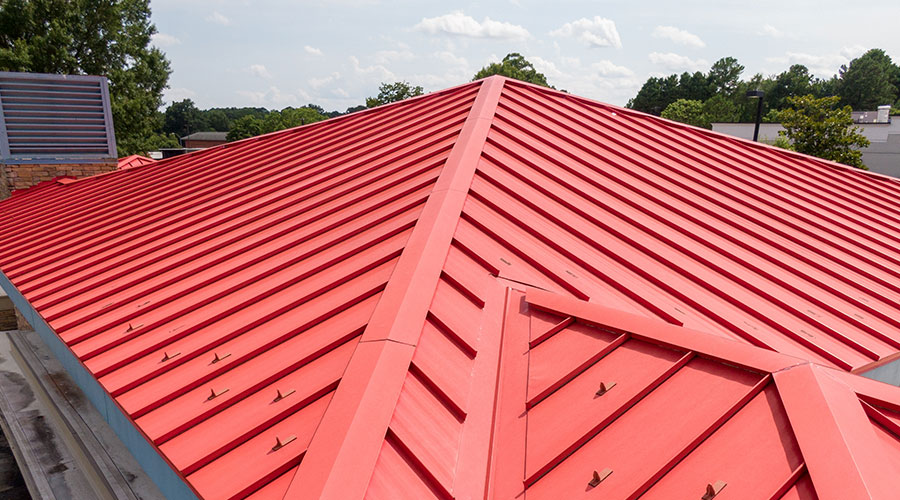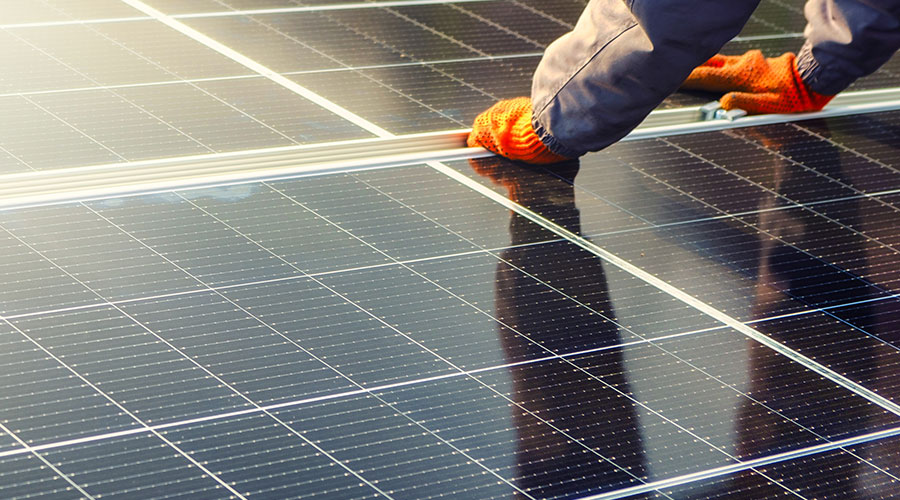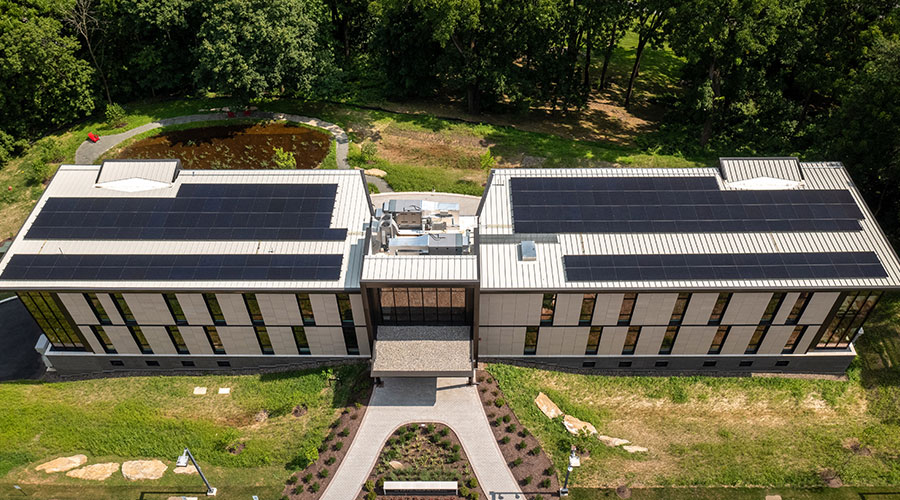Metal Roof and Wall Systems Prove Durable, Cost Effective
Given an economy that remains tight, along with ongoing concerns about energy costs and use, many facility owners and developers are interested in building materials that are long-lasting, attractive, have a minimal impact on the environment, and won't break their construction or maintenance budgets. Filling all these requirements is a tall order, but one that metal roof and wall systems can meet.
As one example, administrators at Northwest Arkansas Community College (NWACC) in Bentonville, Ark., recently retrofitted a 15-year-old shingle roof that was showing signs of wear with a standing seam metal roof. Along with about 30,000 square feet of roofing, another 6,600 square feet of wall space will be constructed of metal, says Jim Lay, head of the college's construction and facilities planning departments.
The new roof fits in with the surrounding campus because, according to the college's master plan, all building roofs now will be metal. In addition, the metal roof enabled NWACC to achieve LEED credits. That's because it will reflect the sun's energy, rather than absorb it, Lay says. What's more, while the initial cost for the metal roofing material was a bit higher than the cost for other options, it allowed for a simpler, and thus less expensive, structure below the roof. Ongoing maintenance costs also will be lower. "The system will be cheaper over the life cycle of the project," Lay says.
NWACC also saved on construction dollars by designing panel sizes that are repeated throughout the exterior elevations, Lay says. "We worked directly with the panel manufacturer to assure that our panel layout was not wasting material or labor during the manufacturing process, assuring economy as well as durability."
Given the benefits of metal roofs, it's not surprising that their share of the overall roofing market is increasing. In the commercial sector, metal now accounts for 22.1 percent of the roofing market, up from 18.8 percent in 2006, according to a recent report for the Metal Construction Association and American Iron & Steel Institute. Metal has an even greater share in the low-rise building construction market, where it has captured about 39 percent of the market, according to the Metal Building Manufacturers Association.
What's more, according to 2004 research by Ducker Worldwide, a market research firm, owners of metal roofs rated their satisfaction higher than did owners of asphalt or single-ply roofs.
Long Life Spans
Metal roofs offer a number of attributes that likely led to the owners' satisfaction. One is their long life spans. "We have roofs that are 100 years old," says Scott Kriner, technical director with The Metal Initiative.
"In Europe, you can go to the churches, and see metal materials that have been around for hundreds of years," adds Robert Anderson, metal products manager with Firestone Building Products. The materials typically used in metal roofs, including steel, aluminum, copper and zinc, all have "anti-corrosive properties," Anderson says, which keeps them from easily degrading.
Metal roofs' long life spans may come as a surprise to facility managers who aren't familiar with them. For starters, while the warranties on most low-slope, standing seam metal roofs are for 20 to 25 years, the roofs' expected service lives are upwards of 40 years, and often closer to 60, says Rob Haddock, director with Metal Roof Advisory Group, Ltd. "The warranties are conservative," Haddock says. "The industry hasn't gotten into pushing the envelope in terms of warranties, as competitive roofing types have done."
What's more, while some manufacturers of other types of roofs claim to offer 20-plus year warranties, many are not what they seem. Instead, they are 15-year warranties that provide the manufacturer the option to extend the warranty, based on its analysis of the roof at that point in time, Haddock says.
About The Metal Initiative
The Metal Initiative is an industrywide program committed to educating building owners, architects and contractors about the use of metal in construction projects. Its members are forward-thinking companies in the metal products industry.
Members of The Metal Initiative assemble and disseminate information that can be used by decision-makers, including building owners and managers, as they design and initiate construction projects. In addition, TMI members can analyze all aspects of metal use in a specific project, helping building owners and facilities teams determine how metal can meet their specific needs. Among the factors they'll analyze are the roof's return on investment, maintenance cost, useful life and life-cycle cost, environmental impact, recyclability and recycled content, and aesthetic appeal.
The Metal Initiative also works to counter the misperceptions regarding the use of metal that are held by some in the construction community. For instance, it's sometimes assumed that metal is disposed of in landfills. In reality, metal is nearly 100 percent recycled. This myth, along with others, has kept many building owners from benefiting from the use of metal in their projects.
|
Related Topics:













